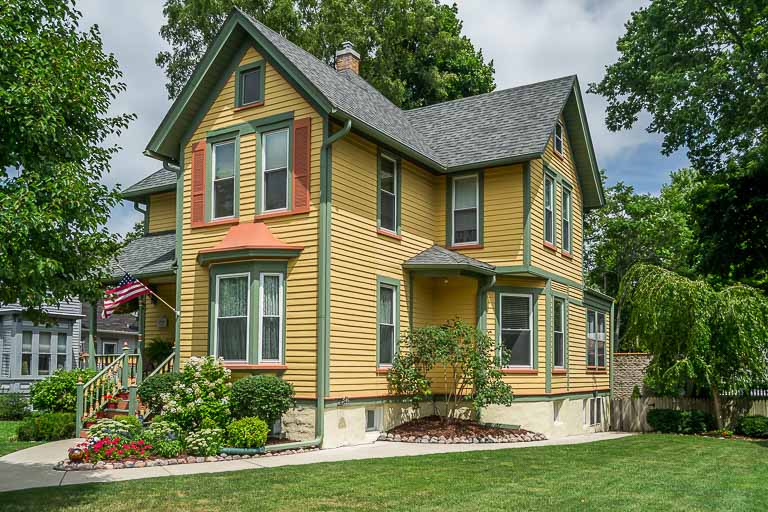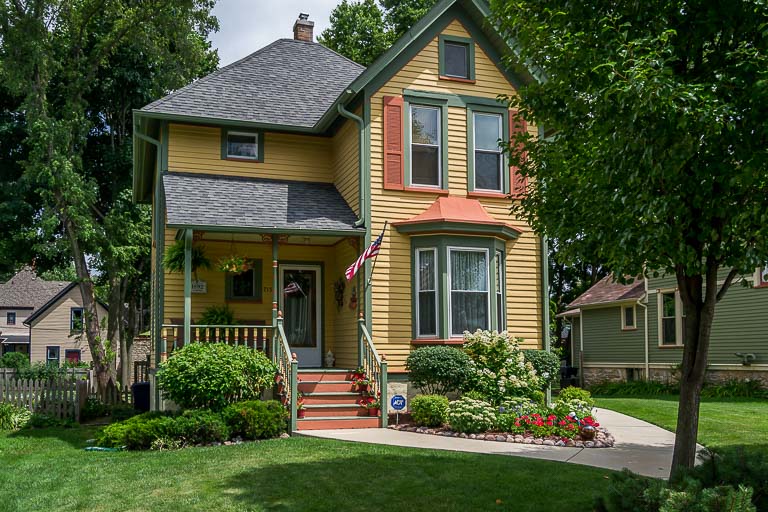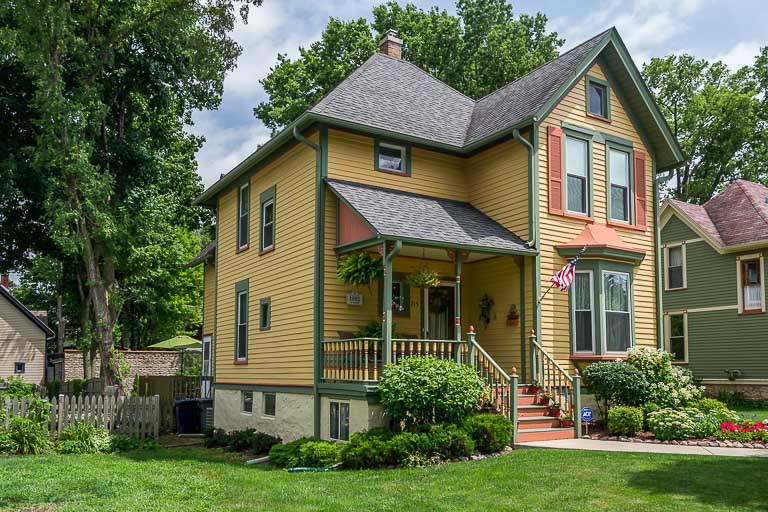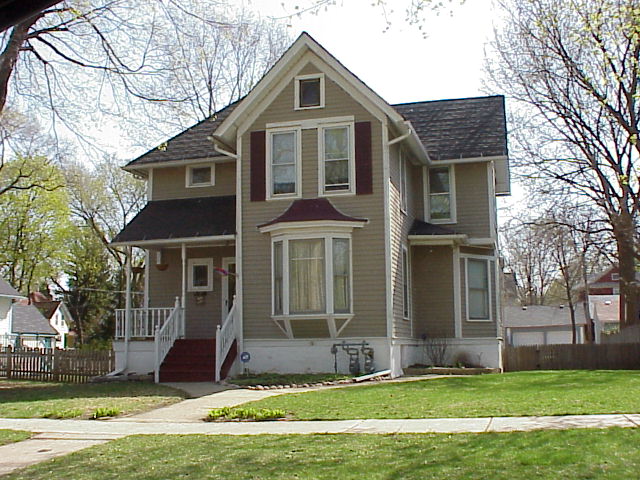715 BROOK AVENUE
HISTORIC SIGNIFICANCE
In the December 31, 1892 issue of the Elgin Daily Courier, an annual review of construction in town was published. This issue notes that a home was built at 715 Brook for M. Roefer for $2200. Martin Roefer was a German immigrant who came to Elgin in 1883. Shortly after coming to town, he started working for the George M. Peck Company, a dry goods store on South Grove Avenue. He worked there for 40 years, rising the ranks and managing the rug, drapery and carpet departments before the Palm Sunday tornado destroyed the store in March of 1920.
At first Peck hoped to rebuild his store and continue the business, but he instead decided to retire. After his retirement, the store was leased to Joseph Spiess, a name that came to be synonymous with Elgin's downtown retail. Roefer, however, continued working in the carpet department of the new Spiess store until his death in 1928, at the age of 77.
715 Brook Street stayed in possession of the Roefer family through his sons and extended family until it was sold to Carlton Hoth in 1936. Hoth kept the house for the next 42 years before selling it.
ARCHITECTURAL SIGNIFICANCE
715 Brook Street is not of a style that is easily identifiable. It instead is most likely a Gabeled-front-and-wing style, which was popular in the late 1800s. The name comes from there being one front facing gable crossed with one side gable winged to the side. In this case, the roof is cross gabled, but retains a number of other identifiers remain including the asymmetry of the home, its two-story height, subtle Victorian detailing on the front porch and bay window. These were typically working class dwellings, a stark difference from many of the Victorian homes of the time, which were of high styles.
TIMELINE OF PREVIOUS OWNERS
Sources: 2003 Heritage Plaque Application; Audio: TextAloud







